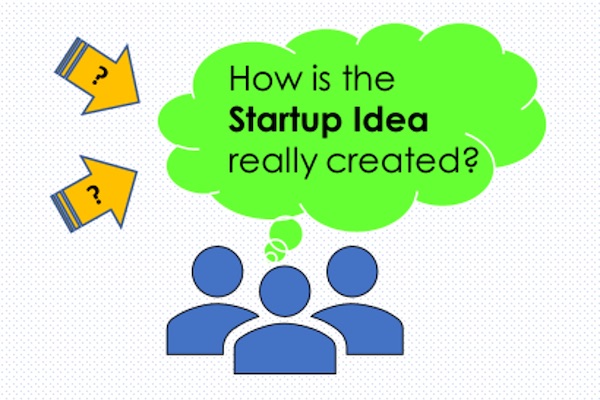How the Pandemic Created the Virtual Innovation Lab
COVID reshaped every department—including your innovation department. Find out how some organizations adapted to the remote work age by creating the virtual innovation lab, and how you can create your own by downloading this complimentary infographic.
Reflections on the Evolving Role of Innovation Professionals, Based on a Recent Panel Session
I recently participated in a panel session as part of a great conference organised by the Innov8rs group (thanks Hans!), with an amazing set of innovation leaders, including Gina O’Connor, John Metselaar, and Andrea Kates.
3 Ways Real-Time Financial Data Drives Business Intelligence
Finance is no stranger to using data in predictive analysis, forecasting, and more, but what can real-time data bring to the table?
How Many Types of Innovation Are There?
Innovation thought leader Nick Skillicorn recently did a pretty good job summarizing all of the innovation theories. And we noticed that there are a few key similarities between most (or all) of these theories that we think are interesting! Download this infographic to learn more about the 15 Theories of Innovation.
Start Here for Creative Leadership
How can leaders fight apathy or indifference in the workplace and create an environment where creativity and innovation can naturally flourish?
How Going Green Can Help Your Profits and the Environment
The scientific consensus on anthropogenic climate change only grows stronger. The most recent word from scientists is that the present warming of the globe is "unprecedented" in the last 2,000 years. Some 99% of scientists stood in agreement on this in 2011, and now the scientific community has declared there's "no doubt left" that human activity is warming the earth.
How Are Innovative Learning Platforms Influencing the Future of Work?
Technology has been transforming the workplace for some time now. The traditional education system was formed in the heat of the industrial revolution and many would say is obsolete nowadays. It was primarily meant to create a workforce that was only fit to perform one task for the rest of their working lives. Motivation has obviously shifted from those times towards more engaging, complex, and fulfilling work.
Driving Exponential Online Growth by Creating and Reaching New Digital Customers
How can we succeed in the online world when it seems to be changing by the day? This article explores critical questions business leaders need to be asking themselves as they explore case examples and strategies that have been applied by others, examine how the technologies and capabilities of the ‘mobile first’ internet could evolve in the next few years and identify a set of practical actions they can adopt to drive exponential online sales growth.
Startup Ideas are NOT Inspired on the Spur of the Moment!
Based on research in the market and in many countries, I tried to figure out the exact mechanism by which startup ideas are created. Aim is to facilitate and expedite this process for would-be entrepreneurs. Is it mainly a matter of brainstorming effort or are external factors at play?
Technology for Better Innovative Management
In today’s workplace, you’re expected to do as much as you can with a variable amount of resources. How can you keep an in-office, remote, or combination workforce engaged using technology? We recommend four steps: educate, collaborate, monitor, and secure.
Key Innovations that are Transforming the Supply Chain Industry
Technology is transforming every industry across the globe, and its effectively driving the business world forward as a whole. At the center of all of this is, of course, the bottom line, or the consumers, and how they benefit from the integration of tech solutions into the processes of their favorite brands.
Digital Factory of the Incumbent: Software of the Mind
This paper was originally published on smartinsights.com, the 11th of September, 2018. Republished here with permission from the author.
Technological changes are one of the leading advocators to shape customer value. They are characterized by a process of social technological variations, rooted in different disciplines e.g., economics, sociology, and psychology.
Leading Innovation within Government Agencies: What to Drive and What to Avoid
As innovation professionals, we too often look for inspiration from organizations such as Apple, Amazon, Tesla, Spotify, Google, etc. Cultures within these businesses are encourage transparency, experimentation and autonomy resulting in engaged workforce of the best and brightest minds, pumping out game changing products on-schedule, on-budget and on-point. We want that for the organizations that we support. We want to drive those behaviors.
Five Bottlenecks of Digital Innovation
The business needs to define strategy, profitability, and relevance at any given time to break through bottlenecks and avoid pitfalls on the path to innovation.
How to Innovate with Big Data: 4 Essentials
A few years ago, big data was a brand new frontier for businesses, and few could afford to leverage the technology on a large scale. Today, it’s much more accessible for companies of all sizes, and the field of big data has begun to mature.
How IP Law Encourages Creativity
Innovation is crucial for our society. Technological developments in every area of life have completely transformed the way that we communicate, travel, work, eat, and so much more. Without realizing it, we count on inventors like Steve Jobs and Elon Musk to improve and transform our daily lives. What we also don’t realize is that one of the driving forces behind innovation is intellectual property (IP) protection.
Information Systems Management: What Is It?
What is information management when compared to computer science? The real difference is in application. While computer scientists are focused on science, mathematics, and a technical approach to computing, information systems is more focused on individual and organizational development. This typically involves using the programming created by computer scientists.
Tech Trends Improving Business and Operations
New technological advancements emerge every day. As this takes place, it's important to stay aware of changes and advancements.
A More Innovative Europe? Think Different About Innovation!
In Brussels, the Research & Innovation Program Horizon Europe (FP9) is the talk of ‘EU town’. Horizon Europe is hoped to be the great leap forward of Europe to close the innovation gap to the US and stay ahead of the emerging innovation giant China in the coming years.
How Education Can Advance and Innovate Your Business
Education is a powerful vehicle for professional growth. It’s now more affordable, and recent technological innovations have made it easier for employees to acquire and advance their skillsets.
Changes to Drive More Value from Your Innovation / Ideation Platform
In our previous article we focused on some of the serious issues being faced by clients and vendors who are working with innovation / ideation platforms.
7 Mistakes to Avoid when Measuring Innovation
Measuring innovation is one of the most ambiguous tasks when engaging in innovation management. Because of the complex nature of innovation, finding the right metrics is far from being simple.
How Technology Can Augment Human Collaboration
Innovation requires collaboration, but collaboration is stuck in a rut. Data science can help us climb out. It can increase the scale, the intentionality, and the nuance of how we collaborate. With the right data and algorithms, we can set our teams up to do something innovative.
The i-Word
Is there any word more fundamental to the modern business lexicon than ‘innovation’? To say that it forms an important part of enterprise is probably an understatement.
Can Everyone Be Innovative?
Innovation is an integral part of many organizations today, and for good reason: it helps companies stay agile, relevant, and evolving. However, innovation is often difficult to achieve—or is even met with resistance.
Is Your Team Proficient in the 3 Cs of Innovation?
When leaders foster a culture of innovation, they enable their teams to be creative, flexible problem-solvers who thrive in the face of change. But what is a culture of innovation? And how does a leader begin to foster one? Building a culture of innovation originates with embracing The 3 Cs: critical thinking, curiosity, and customer-centric design.
Lessons from Apple on Why Aesthetic Innovation is Important
It’s pretty much impossible to argue with Apple’s success. It’s one of the most valuable companies in the world, and has maintained dominance for its reputation as an innovative company that produces top-of-the-line hardware. Because of its products and brand reputation, Apple has gained a cult following that will buy nearly every new product that emerges, year after year. So why, even with the high price tag, are so many consumers willing to shell out for every new gadget that comes along?
Why Your Business Transformations Fail
Ambitious and impractical business schemes can often lack the fundamental elements needed to make them a reality, leaving huge expense and casualties of the blame game in their wake. The business world is littered with the remnants of unrealised programs and unsuccessful plans for development, several of them so high profile as to have attracted national notoriety.




















